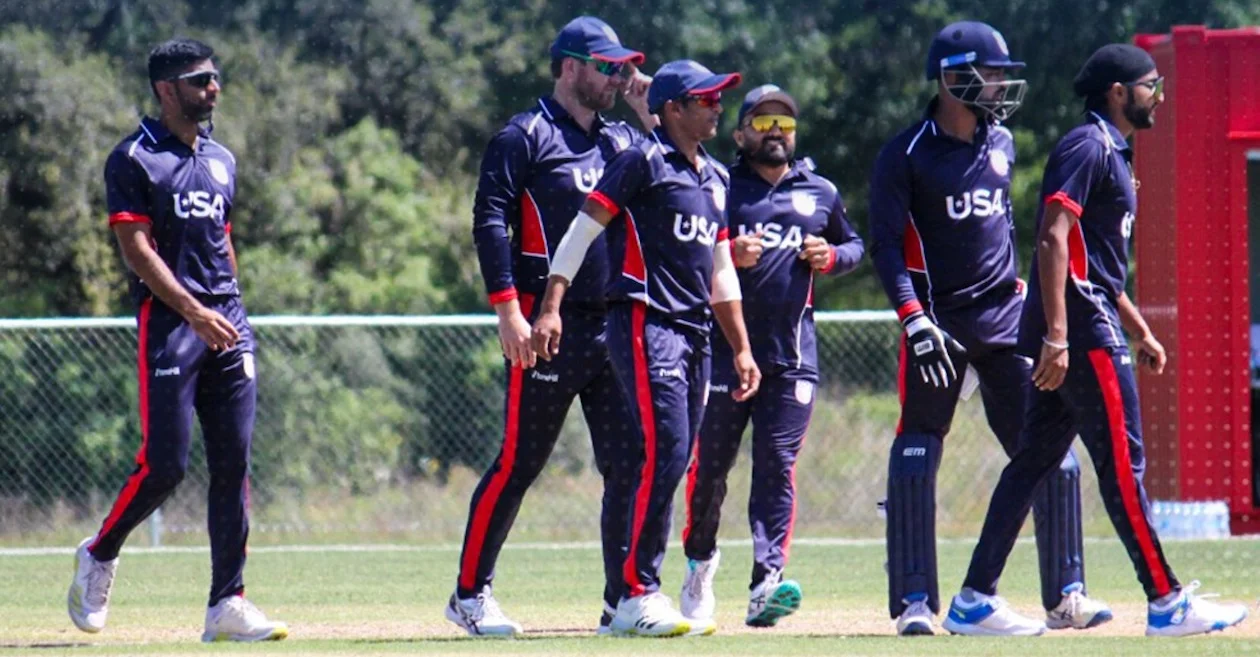
Trying to separate quarterbacks’ performance from the effects of their surroundings
Quarterbacks are the focal points of NFL offenses to a greater extent than ever before. Teams with “franchise” quarterbacks, such as the Kansas City Chiefs, feel lucky to have them and can focus on improving the pieces around them. Teams that clearly do not have franchise quarterbacks, such as the Carolina Panthers, feel pressure to give up assets to move to the top of the draft and get one…if they can figure out which prospect has the best chance of becoming one.
Teams in between, like the New York Giants and Seattle Seahawks, had difficult decisions to make about whether their current quarterback is “the guy.” Both teams made their decisions this winter, giving Daniel Jones and Geno Smith multi-year contracts that were unthinkable a year ago and that seemed too large to many people given their past performance.
For QBs like Patrick Mahomes and Josh Allen, their quality is so obvious that no discussion is needed. For other QBs, though, things are not so clear. Which QBs benefit from favorable surroundings? Which are held back by the team around them?
Traditional statistics
Fans naturally focus on easily quantified measures that are clear to the casual observer such as passing yards and touchdown passes. Here are the top 16 QBs ranked by passing yards in 2022 (data from Pro Football Reference):
/cdn.vox-cdn.com/uploads/chorus_asset/file/24542596/Screenshot_2023_03_28_at_11.34.11_AM.png)
Data from Pro Football Reference
If we rank by TD passes instead, most of the same names show up in the top half. although Dak Prescott is added and Russell Wilson and Daniel Jones drop off. And that’s a clue that something is wrong. No one would argue that Russell Wilson had anything but a disastrous season in 2022 – his team went 4-11 in games he started, and most people feel he was a big reason for that.
On the flip side, Daniel Jones’ stats were modest, yet he was considered a big reason why the Giants made the playoffs and reached the Divisional Round. We’ve discussed this previously in connection with Jones’ contributions from rushing and the effect of the team around him.
Quantifying quarterback efficiency
The concept of expected points added (EPA) has become a popular way to assess quarterbacks. It utilizes the results of individual offensive plays within the context of down, distance, yard line, and game situation to evaluate how much the QB did to increase or decrease the probability of his team scoring points. Here are the top 16 QBs in EPA per play in 2022 from RBSDM:
/cdn.vox-cdn.com/uploads/chorus_asset/file/24542657/Screenshot_2023_03_28_at_11.52.59_AM.png)
Data from RBSDM
Jones finished 13th in EPA/play, a huge improvement from his rankings in 2019 (34th), 2020 (36th), and 2021 (28th). That seems consistent with what we saw in 2022, especially after the first few games. It’s a couple of slots higher than his ranking in passing yards but not dramatically different.
But something doesn’t seem right about the rankings. Jimmy Garoppolo and Brock Purdy are both in the top six. Are they that good, or is it the team around them? Meanwhile Sam Darnold finished 9th in a limited sample. He impressed the Panthers so much that they traded him to San Francisco.
Isolating the quarterback’s contribution
Kevin Cole of Unexpected Points has created a method to adjust quarterback EPA/play numbers for the positive and negative factors outside the QB’s control:
- Quality of the receivers the QB throws to
- How much the offensive scheme contributes to increasing EPA
- Drops by receivers
- Luck (interceptions that should have occurred but didn’t, fumbles that were recovered by the QB’s team)
- Quality of the offensive line blocking
- Strength of schedule
- Departure of the weather from normal conditions
Cole’s EPA database seems to be a little different from RBSDM’s, but they agree pretty well overall about who the best QBs were in raw EPA/play in 202.
Here are the QB rankings for adjusted EPA/play for 2022. For each QB there are two points. The circle represents the unadjusted EPA, the picture the adjusted version. This allows us to see at a glance whether a given QB was helped by the team around him, by luck, etc., and which were hurt by the factors not under their control. A QB whose picture is to the right of his circle was hurt by the team around him and other factors, while a QB whose picture is to the left of his circle was helped by external factors:
/cdn.vox-cdn.com/uploads/chorus_asset/file/24542739/Adj_EPA.jpg)
Data from Kevin Cole, Unexpected Points
Yes, your No. 5 ranked quarterback for the 2022 NFL season is Daniel Jones. If you follow the dots you’ll see that Jones is 12th highest in raw EPA/play, identical to the RBSDM result except that Cole for some reason did not include Jacoby Brissett in his analysis. But Jones receives one of the largest upward bumps in EPA/play from factors not under his control.
Maybe that result seems implausible to you. We’ll come back to that later. First, let’s look at a few of the other QBs to see whether Cole’s methods lead to results that pass the eye test. To do so, here is a table showing the effects of the individual adjustments on each QB:
/cdn.vox-cdn.com/uploads/chorus_asset/file/24542791/QB_adj_Cole.jpg)
Data from Kevin Cole, Unexpected Points
A few things to note:
- The biggest negative total adjustment in total EPA (-43.1) is for Jalen Hurts. This comes primarily from his receivers (-22.4) and blocking (-12.3). Hurts’ unadjusted season EPA was twice that of Jones’, but their adjusted EPAs are almost identical. If you are a believer that Hurts was greatly helped by the team around him, there’s your evidence.
- The next largest negative adjustment (-39.1) is for Russell Wilson. He was helped by his receivers (-22.4) and still had an awful year. Wow.
- The third largest negative adjustment (-31.7) is for Kirk Cousins. Almost all of that comes from his receivers. If you subscribe to the idea that Cousins is a middling QB who just has the best receiver in the NFL to work with, this table is for you.
- The next largest negative adjustments are for Jimmy Garoppolo (-28.6) and Brock Purdy (-26.3). The 49ers made it to the NFC Championship Game despite their QBs, not because of them.
Those are the QBs who looked a lot better than they really were last season. As for the QBs who didn’t look as good as they really were:
- Tied for first is Daniel Jones (+31.7 adjustment). Jones was one of the QBs most affected by dropped passes last season (+13.4), and the quality of his receivers in general (+8.8) and his pass blockers (+6.9) did him no favors either. On the other hand, he gained 7.7 EPA because of his good fortune in not having passes intercepted that should have been. Interestingly, scheme was a negligible factor in his success. My guess is that any benefit that accrued to Jones from the creative play-calling of Mike Kafka was offset for EPA purposes by the run-heavy, short passing approach the Giants felt they needed to use to limit the damage from their subpar blockers and receivers.
- Ryan Tannehill was tied with Jones for the biggest positive adjustment, with Trevor Lawrence only a little behind (+30.7). All three QBs were plagued by receiver drops and general quality of the receiving corps as well as poor blocking. Like Jones, Lawrence’s adjustments come on top of a fairly high actual EPA, making him potentially one of the top QBs as well.
- Justin Fields had the next highest positive adjustment of any QB (+27.2). The good news for Fields is that other than the EPA he lost to fumbles, almost every other category was a positive adjustment for him, including a whopping +12.7 for bad weather. So with the better talent the Bears are gathering and better luck, Fields may look much better in 2023. The bad news is that he is starting from a very low unadjusted EPA, i.e., he needs to show real improvement himself if he is to be the Bears’ long-term answer at QB.
Is Daniel Jones really the 5th best quarterback in the NFL?
No, of course not. All that Cole’s adjustments tell us about any quarterback are whether there were external factors that either limited or assisted their success last season. We can think of QBs with positive adjustments as projections of what those quarterbacks might possibly be capable of if problems on the field that were out of their control were remedied.
To quote John Mara, “We’ve done everything possible to screw this kid up.” I haven’t come across anyone who would argue with that statement, and the 2022 season showed that there was at least some validity to it. With a modest infusion of talent by Joe Schoen and an offensive scheme and play-calling that optimized what was possible with the talent on the field, Jones and the Giants had a successful season.
The adjustments tell us that in principle it can be better in the future. What we don’t know is whether, given a set of receivers and an offensive line like those Jalen Hurts has to work with, Jones can take another step upward. What we don’t know is whether a more attacking downfield high EPA per play offense like the ones Daboll and Kafka were associated with in Buffalo and Kansas City could thrive with a QB like Jones at the helm, or whether and how much his inherent limitations will prevent him from truly becoming a top-tier QB.
What the adjustments do explain, though, is how Jones got a $40M per year 4-year contract. The adjustments are the meat left on the bone that Schoen and Daboll saw, not just in Jones’ development, but in the factors around him that held him back. They’re betting they can do something with that, but they were unlucky in getting their hands on Jones in his fourth year rather than his first or second. The Eagles were more fortunate. They have had time to see what Jalen Hurts can do with a Pro Bowl-caliber offense around him, and that’s why he’ll probably get a contract $10M+ per year more than Jones got even though their adjusted EPAs are about the same.


















You must be logged in to post a comment Login